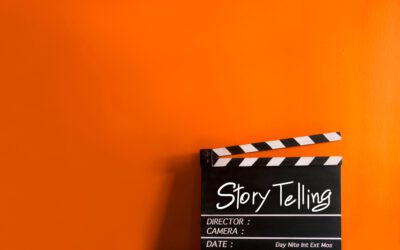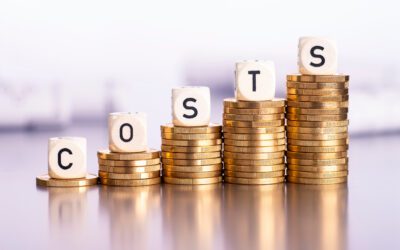With the often huge investment required to shine on the floor, how do you justify the numbers? The key is effective measurement.
In this blog, EDE’s Jay Menashe sits down with Jeremy Scott to discuss meaningful trade show measurement. See the full interview with Jeremy Scott here:
For Scott, the ROI of a trade show should impact your overall sales pipeline. Why is that important?
“One is because of the amount of investment that goes into a show,” Jeremy says. “You have the booth, the floor, possible speaking engagements, and travel for the team. Ultimately that should be measured from a performance marketing side. Within marketing, you shouldn’t be doing anything you can’t measure. Even if it’s just for brand awareness, you can always measure those things.”
Data Matters but the Story You Tell is What Sells
There’s No Story Without Sales & Marketing Alignment
Balancing Quantity and Quality
Getting Started With Measurement
Data Matters but the Story You Tell is What Sells
With all the messaging bombardment that starts when attendees enter the building, walking the floor can feel like they’re walking the gauntlet. So it makes sense that they, like most people, don’t want to be sold on the floor. Scott’s advice?
“It all starts with small talk first,” says Jeremy. “When someone walks up to you, if you can figure out how to add value to their day, whether it’s telling them that Starbucks is down the street or where to find lunch. It’s just using conversations to create an engagement.”
Scott encourages paying careful attention to the makeup of your booth staff. Should it be your sales team? Your marketing team? Even HR department personnel? “What that looks like is getting buy-in internally and then putting those players in place, but ultimately having those players responsible for part of the ROI,” says Jeremy. ”It might not be all sales, not all marketing. A lot of times it’s whoever can tell your brand story the best and whoever can start a conversation.”
|
 |
There’s No Story Without Sales & Marketing Alignment
Prepping for a show involves more than just getting physical assets ready and placed on the floor. Creating sales and marketing alignment at the beginning is critical to delivering real ROI from the show. Scott recommends identifying an event sales lead to function as the quarterback of your show team.
Companies with larger sales teams should have insights on who’s in attendance so they can work with marketing to target attendees based on your ideal customer profile, including your current accounts. Working together to research attendees, define objectives, and identify potential cross sell and upsell opportunities, your event lead and marketing team can create a winning team for your booth staff.
After selecting your A team, it’s time to educate them about the audience you’re targeting, how you want to engage prospects and current customers, what to do to drive engagement, and what you expect to accomplish with each engagement.
Teamwork makes the dream work and when you’re talking about teamwork, you’re really talking about process. It may be tempting to try to mold your team into someone else’s process, but that’s probably not going to work. You’ve got to discover what works for your team. And what works in the pressure cooker of the show floor.
“It is something that’s trained, so you need to make sure that the person that’s not talking to someone knows that once they get done, they’re gonna turn around, they may write down some notes, they may jot something down, they may enter something on the iPad, and the other person takes the front lead to take over that conversation or say hi to the next person that’s walking up,” Jeremy says.
So take the time to create and optimize your process. Scott encourages companies to bring the entire internal team in when creating metrics to create numbers that matter to everyone.
“When we look at pipeline and revenue, those are really what the organization needs,” says Jeremy. Start by establishing your goals and objectives for the show, then create the metrics you will measure, and finally, clearly communicate those to your show team. Before every show, take time to meet with your team to review your goals, the accounts that will be in attendance, and even what you will be measuring.
Now the fun part.
With your objectives in mind, it’s time to design the flow of your attendee engagement. Walk through a typical meeting (yes, there are no typical meetings, but work with us here) with a visitor, from start to finish. Ask what you need to happen and in what order. Then assign team members to each station in the process.
As you walk through, be on the lookout for unintended occurrences or anything that can interrupt the flow. And remember that people won’t be coming in an orderly fashion, so your process should have flexibility and adaptability built in.
Where Did the Data Go?
Okay, you’ve done your homework to align sales and marketing. You’ve created the perfect booth flow. And nailed down roles and responsibilities. What’s next? Doing something with all that data you’re capturing at the show. From phone shots of post-it notes to spreadsheets to your CRM, now’s the time to get everyone on the same page regarding how to handle the data.
Not so easy, is it?
The inconvenient truth is that the longer the delay between data acquisition and adding it to your CRM, the less likely that will ever happen. And that results in…
“Hello Prospect, I don’t know what we talked about or really even remember meeting you so I’m just calling to follow up.”
Not exactly an exercise in trust-building, right?
“That’s such an understated point because of the speed of it,” says Jay. “If I don’t write something down and I don’t have it mentally put somewhere or in front of me, it’s just forgotten. People at the shows, let alone your staff in your booth , are having dozens of conversations. So if you’re waiting a week or even two or three, it’s like you basically just wasted that investment. So doing it quickly and efficiently is a key point.”
Note taking becomes especially important in situations where the person standing at the booth may not be the primary account owner or the person you want to refer to the business development rep.
It can be very busy on the show floor, so you need a process for data gathering that works for your team. “This may sound crazy, but we’ve even had post-it notes where we wrote the info down, quickly took a picture of it, and it went into the CRM with the lead,” Jeremy says .
If it’s not in the CRM, it might not be true, right? Getting the day’s data into Excel or your CRM must be an everyday priority. “Each team member working the booth should have some responsibility at the end of the night,” says Jeremy. “Historically, I’ve asked them to enter the data in the evening, when it gets slow, or when they take a break.”
The Story in the Data
Engaging with customers, really knowing their journey and where they are in it, will help you understand how your conversations impacted their journey. After every show, create a narrative that shows your interactions. This should identify every interaction, where it took place, who you met with, and who talked with them.
Don’t limit this to quantitative information; narrations and other subjective information – even pictures – should be included in a detailed breakdown of your sales process and touchpoints.
Input from your sales team is critical to the success of your narrative and that goes back to aligning sales and marketing. By creating that partnership between sales and marketing up front, you’re building trust and focusing on driving internal engagement to ultimately drive external engagement.
Couple this with showing how much they are spending and how much they spend with you (including their 12 month revenue). With this information, you should be able to identify the market share available with them.
“Your sales team has been trying to get engagement for six months,” Jeremy says. “And the next thing you know, your buyer is walking the show floor, you’re engaging with them, and your sales team doesn’t even know about it. ”
“We talk about how many touchpoints happen throughout the opportunity,” says Jay. “And trade shows are also about pipeline and opportunity acceleration, as well. You may not get that many quality touchpoints throughout the year because it’s hard to get people together. As great as it is talking to people online or on a call, when you’re in-person, there’s just a different power to it and a different connection level. And looking at that after the show is a really great way to analyze it.”
Putting Your Data to Work
Scott advises starting with customers engaged with during the show to determine if they’re existing customers or not. Next comes understanding their spend as a whole, regardless of their status.
“So if you can say this customer is buying our widget and spending a million dollars a year with us, but they’re buying other widgets and their market share is five times x and you can get half of that, that’s a win,” he says.
The right data in the right format can be inspiring for your sales team. For example, comparing existing customer 12 month revenue with what they spend externally to picture what gaining a third of that could be. Jeremy and Jay agree that showing big numbers here to the sales team will drive the engagement and excitement that can make or break an event.
Another consideration is opportunity. Find out how long an opportunity has been there and then measure that. And then ask yourself how often you are closing the opportunity.
“The data tells me we’ve engaged with this customer three times at a trade show, and now we’re closing that opportunity more often,” says Jeremy. “I would imagine that if a lot of large organizations looked at their top 20 customers over the year, on average they touch those customers at least three times throughout a year at an event.
“So when you look at that, ask if that’s the case, why don’t we touch them more often? Or why don’t we engage them better?”
Balancing Quantity and Quality
One metric everyone should measure is how many people are engaged. And while that may vary from spreadsheet entries to badge scans, if it’s someone that you don’t think might be a customer, go ahead and scan them so you can include that in your measurements but then move on.
Remember, people move around a lot in this ecosystem so it’s important to engage everyone. Just make sure you are spending time with customers that fit your profiles. Additionally, scanning everyone that enters the booth measures brand awareness and brand engagement. Just understand that, like website visitors, not everyone is going to be a lead.
Follow your process for engagement, including how many conversations you have, how long they were there, what kind of questions they asked, and how you answered those. Scott asserts that while quality is the most important measure, quantity is still an important factor in overall spend.
Getting Started With Measurement
If you’ve been falling behind with measurement, now’s a good time to make up for lost time. Start with your internal team. You need to understand their needs ,because if you’re only creating metrics that matter to you, that may give less than stellar results. And it may not be the metrics your organization needs. So really understanding your company’s goals and objectives and communicating that internally is extremely important.
|
 |
Examine every piece of data you’ve collected to identify how much opportunity there is with an existing customer. Ask what you are doing with existing customer 12 month revenue? Find out how much they are spending externally with your competitors? And imagine what it would look like if you could gain a third of that spend. “I guarantee, if that’s a huge number and you take that back to the sales team, there’s gonna be a narrative around that in their own personal meetings.”
Often the person executing trade shows is looked upon at the executioner. If that’s you, remember that your show should be one smooth motion and you need to see that at a very high level and what that motion should look like.
When you’re working with your internal marketing team, inform them and your content team and your email team. Do this , and you may find those teams are happy because you’re coming to them with content that your customers actually want to hear. On a side note: if you can’t figure out a way to add value through that single motion, it really shouldn’t be done.
Optimizing Future Shows
What do you do with all that great data you’ve accumulated? Scott recommends comparing existing customers at trade show A versus trade show B and doing the same for non-transacting customers (those who haven’t transacted in a year).
“You’ll probably find that A outweighs B. So maybe there’s a lot of existing customers in B and a lot of new customers in A, which gives more opportunity. But when we look at B, we ask should we host an external event versus having a booth at the show? It’s really about figuring out your goals and objectives and then driving that engagement.”
Let’s Talk Swag
We’ve said it before – we love swag! And everybody gives it away. But how many measure its impact? Scott has a unique perspective on that.
“With any promotional piece, the average is 2,500 brand impressions,” says Jeremy. “And so you take your total number given away and you times that by 2,500. And that ultimately gives your brand impressions. When you look at that and are able to say within this ecosystem we were able to make X number of brand impressions, I think that’s huge! “
Measurement Checklist
Checklists make life easier. Tag or print our go-to checklist to get things on track when planning your next trade show!
- Align Sales and Marketing on your trade show goals
- Select your A-Team to attend the show
- Create and optimize your process for data collection and note taking
- Design the flow of your attendee engagement
- Assign team members to each station of the flow
- Plan how and when to input data into your CRM (**hint** it’s at the end of every day)
- Analyze your data
- Create a narrative (who, what, where, when, why, and how) around your interactions using data, subjective information, and pictures
- Map your data to the overall company goals and objectives
- Optimize future shows
- Don’t forget to measure swag impressions
Want to learn more ways to measure your booth’s impact? Contact us for the answers you need.


